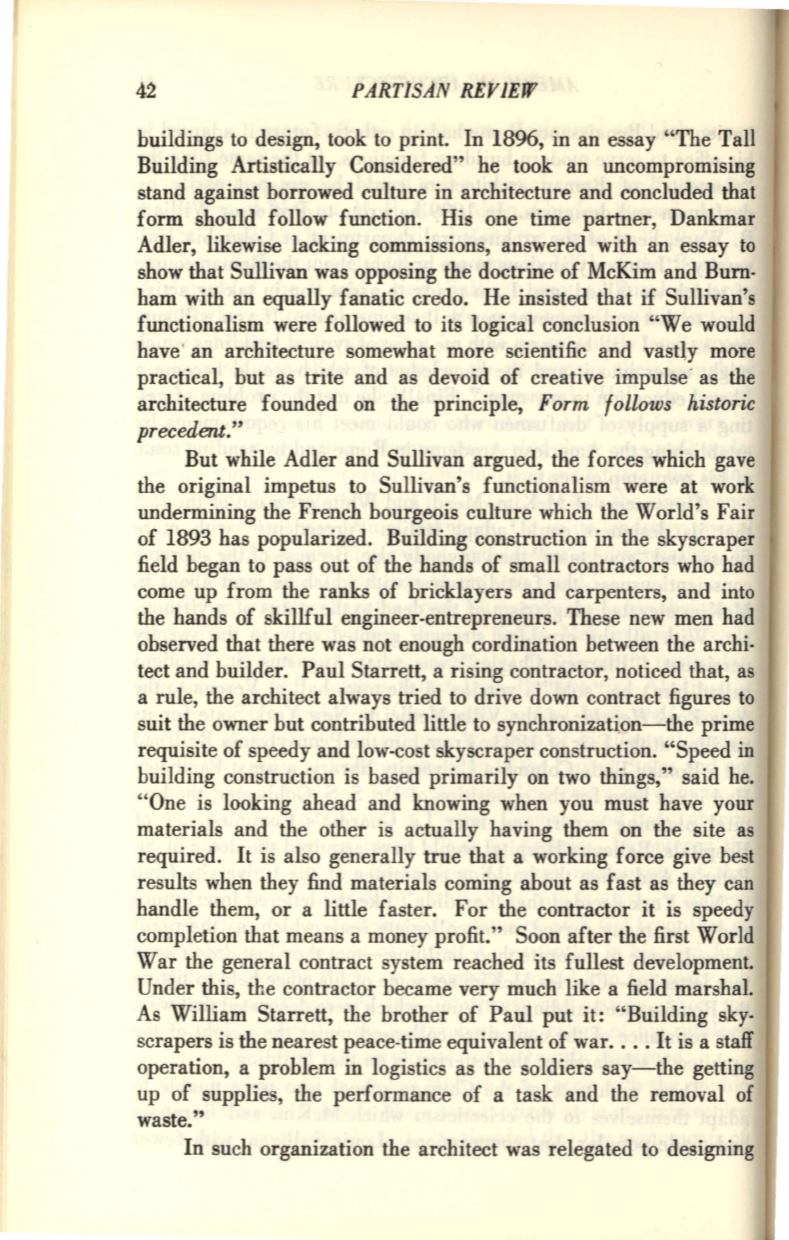
42
PARTISAN
REJIJEW
buildings to design, took to print. In 1896, in an essay "The Tall
Building Artistically Considered" he took an uncompromising
stand against borrowed culture in architecture and concluded that
form should follow function. His one time partner, Dankmar
Adler, likewise lacking commissions, answered with an essay to
show that Sullivan was opposing the doctrine of McKim and Bum·
ham with an equally fanatic credo. He insisted that if Sullivan's
functionalism were followed to its logical conclusion "We would
have ' an architecture somewhat more scientific and vastly more
practical, hut as trite and as devoid of creative impulse · as the
architecture founded on the principle,
Form follows historic
precedent."
But while Adler and Sullivan argued, the forces which gave
the original impetus to Sullivan's functionalism were at work
undermining the French bourgeois culture which the World's Fair
of 1893 has popularized. Building construction in the skyscraper
field began to pass out of the hands of small contractors who had
come up from the ranks of bricklayers and carpenters, and into
the hands of skillful engineer·entrepreneurs. These new men had
observed that there was not enough cordination between the archi·
teet and builder. Paul Starrett, a rising contractor, noticed that, as
a rule, the architect always tried to drive down contract figures to
suit the owner hut contributed little to synchronizati.on-the prime
requisite of speedy and low·cost skyscraper construction. "Speed in
building construction is based primarily on two things," said he.
"One is looking ahead and knowing when you must have your
materials and the other is actually having them on the site as
required. It is also generally true that a working force give best
results when they find materials coming about as fast as they can
handle them, or a little faster. For the contractor it is speedy
completion that means a money profit." Soon after the first World
War the general contract system reached its fullest development.
Under this, the contractor became very much like a field marshal.
As William Starrett, the brother of Paul put it: "Building sky·
scrapers is the nearest peace-time equivalent of war.... It is a staff
operation, a problem in logistics as the soldiers say-the getting
up of supplies, the performance of a task and the removal of
waste."
In such organization the architect was relegated to designing


